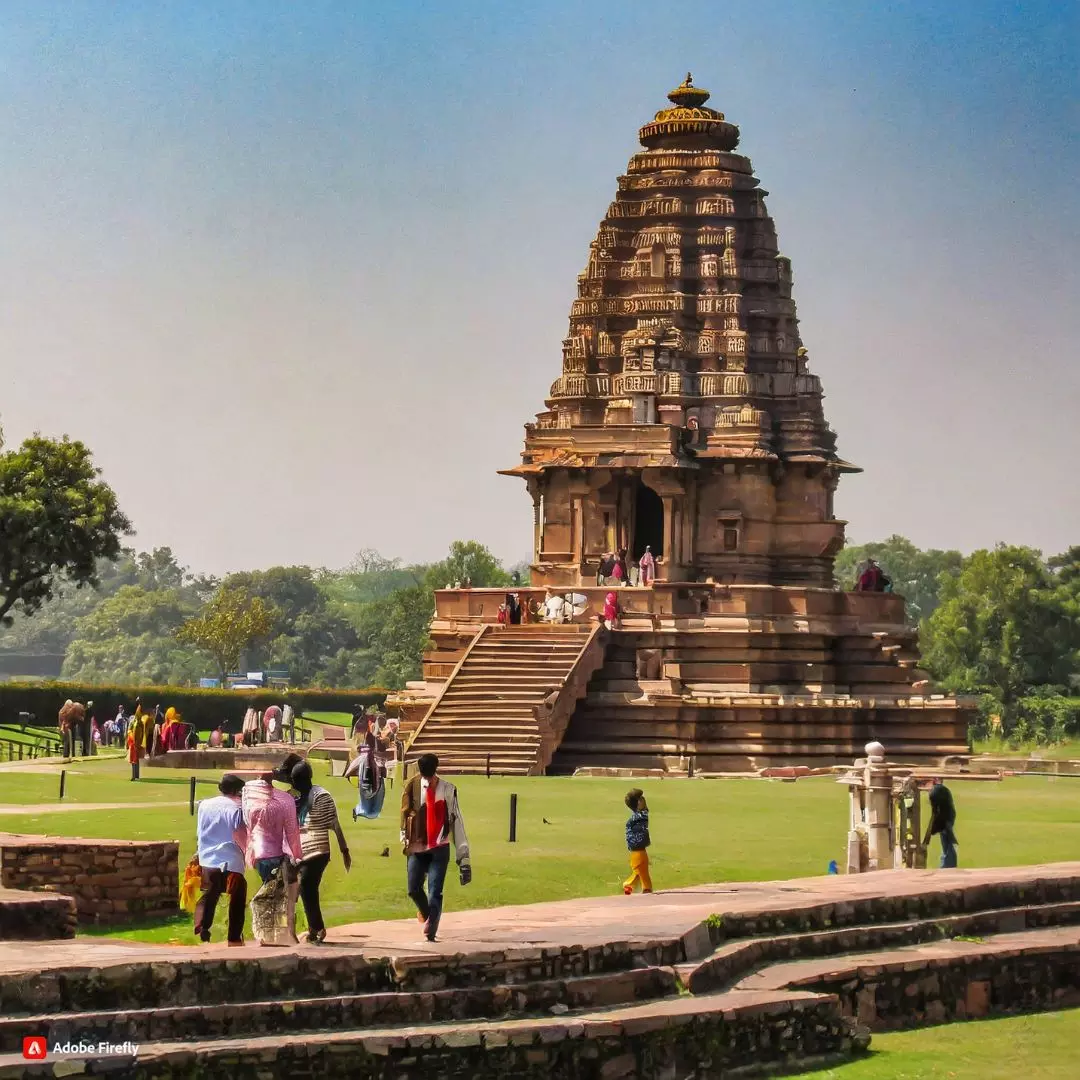
Image Credits: Adobe Firefly
Discovering The Splendor Of Khajuraho: A Glimpse Into India's Architectural Marvel
Writer: Darshita Jain
Exploring Boundaries, Breaking Barriers:Beyond the written word, I'm an adventurer, craving the thrill of discovering new places and meeting diverse souls. Whether it's the pulse of a city or the tranquility of nature, I'm on a perpetual quest to capture the essence of each destination, bringing readers along for the journey.
Madhya Pradesh, 6 Jan 2024 10:52 AM GMT
Editor : Ankita Singh |
A literature lover who likes delving deeper into a wide range of societal issues and expresses her opinions about the same. Keeps looking for best-read recommendations while enjoying her coffee and tea.
Creatives : Darshita Jain
Exploring Boundaries, Breaking Barriers:Beyond the written word, I'm an adventurer, craving the thrill of discovering new places and meeting diverse souls. Whether it's the pulse of a city or the tranquility of nature, I'm on a perpetual quest to capture the essence of each destination, bringing readers along for the journey.
Temples were desecrated, some destroyed, but the site's remoteness protected it from complete ruin. In the 1830s, British surveyor T.S. Burt rediscovered the temples, initiating global awareness.
Nestled in the Chhatarpur district of Madhya Pradesh, India, the Khajuraho Group of Monuments unveils a breathtaking showcase of Hindu and Jain temples, each a masterpiece in Nagara-style architecture. Located approximately 175 kilometers southeast of Jhansi, this UNESCO World Heritage Site, known for its historic significance and a touch of controversy due to its erotic sculptures, continues to captivate visitors from around the world.
Constructed between 885 CE and 1000 CE by the Chandela dynasty, the Khajuraho temples once numbered 85 across 20 square kilometers. Today, only 25 temples remain, spread over six square kilometers. Among these, the Kandariya Mahadeva Temple stands out with its profusion of sculptures, showcasing intricate details, symbolism, and the expressiveness of ancient Indian art. The forgotten temple complex was rediscovered in 1838 by Captain T.S. Burt, a British engineer, who reported his findings in the Journal of the Asiatic Society of Bengal.
Architectural Fusion and Restoration
These temples, dedicated to both Hinduism and Jainism, reflect a remarkable tradition of acceptance and respect for diverse religious views. The Khajuraho Group of Monuments, with its outstanding architecture and temple diversity, earned a well-deserved spot on the UNESCO World Heritage List in 1986. Over the years, extensive restoration efforts have preserved the delicate carvings, allowing visitors to marvel at the architectural brilliance of the Chandela civilization.
The name Khajuraho, derived from ancient Sanskrit, means "date palm bearer." Local legends suggest that the temples once had two golden date-palm trees as their gates. Cunningham's systematic documentation in the 1850s and 1860s categorized the temples into Western, Eastern, and Southern groups, a nomenclature still in use today.
Situated in Chhatarpur district, Khajuraho is easily accessible via the Civil Aerodrome Khajuraho and the Indian Railways service. Connected by National Highways, the site is about 50 kilometers from Chhatarpur and 620 kilometers southeast of New Delhi.
Built during the Chandela dynasty's rule, the temples witnessed their peak construction during the reigns of Yashovarman and Dhanga. The surviving temples, completed between 970 and 1030 AD, reflect a blend of Hindu and Jain influences. The region, referred to as Jijhoti and Jejakabhukti, played a significant role in ancient and medieval literature.
Rediscovery and Preservation:
Under Hindu rule until the 12th century, Khajuraho faced challenges during the 13th century when the Delhi Sultanate seized the Chandela kingdom. Temples were desecrated, some destroyed, but the site's remoteness protected it from complete ruin. In the 1830s, British surveyor T.S. Burt rediscovered the temples, initiating global awareness. Today, the Khajuraho Group of Monuments stands as a testament to resilience, with ongoing preservation efforts maintaining its historical allure.
Khajuraho, with its fascinating history, architectural grandeur, and symbolic carvings, remains a jewel in India's cultural crown. As visitors explore the intricate details and diverse religious influences, they not only witness the artistic brilliance of ancient India but also unravel the layers of cultural tolerance embedded in the stones of Khajuraho. This UNESCO World Heritage Site invites the world to appreciate the harmonious coexistence of Hindu and Jain traditions, preserved for generations to come.
Also Read: Empowering Future Generations: A Guide To Teaching Kids Essential Money Management Skills
 All section
All section














